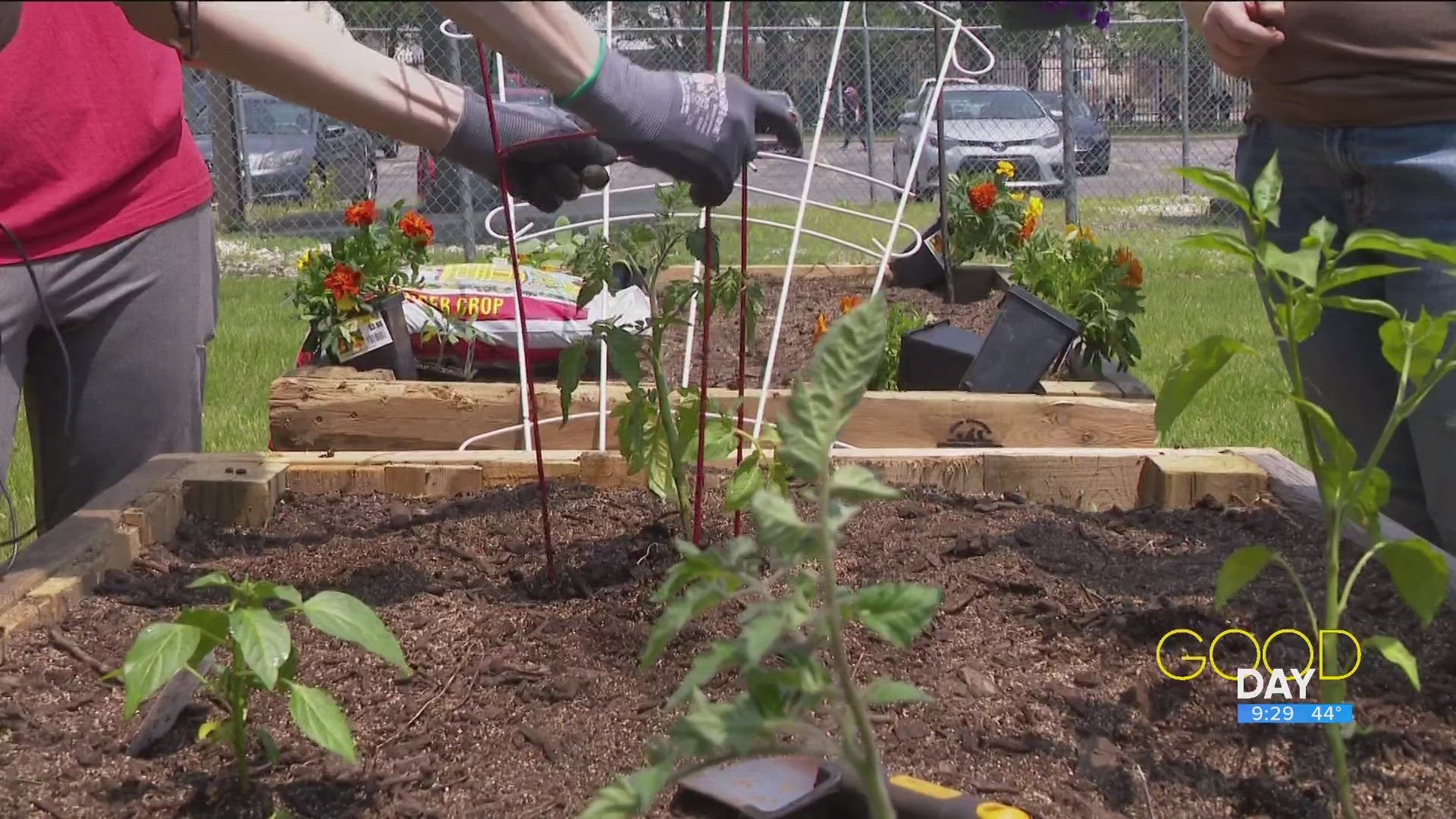TOLEDO, Ohio — Earlier this week, the GOOD DAY team got started on their garden by building garden beds.
Now, they're planting. So, Amanda, Diane and Steven enlisted the help of the experts at Toledo GROWs, an urban farm in downtown Toledo.
The non-profit grows fresh fruits and veggies on two acres to share with friends in the neighborhood. It also supports more than 120 community gardens.
"We get them free seeds in the late winter months and just last week we distributed our free plants that we grew for them," Claire Caryer, Toledo GROWs' education coordinator, said. "Then we help them throughout the summer with technical assistance and any resources that we get offered."
The GOOD DAY team also used technical assistance from Community Garden Coordinator and horticulturalist, Alison Wood-Osmun.
If you have an existing raised bed, Wood-Osmun recommends adding compost in the fall after you've done your clean-out or in early spring. And if you're filling beds for the first time use a quality, 50-50 topsoil, compost mix.
"Don't let anyone sell you dirt. You want soil," Wood-Osmun said.
Soil is alive with microorganisms and nutrients. So use good quality topsoil compost."
Now it's time to get the plants in. Wood-Osmun said you should map out your garden first to see where you should place your plants, maintaining the distance indicated on the tag of each plant. If it's an existing garden, rotate your plants to prevent disease spread.
"Tomatoes you usually go about 24 to 30 inches apart. Peppers are about 18 inches apart. Cucumbers about 12 inches apart," Wood-Osmun said.
Dig your hole deep enough for the top of the soil in your plant to be even with the soil in the bed. Then you want to mud the hole.
"You dig the hole, put some water down deep in the hole. That softens it so the roots can get out," Wood-Osmun said. "Then you put the plant in there and it creates a nice little base of water. Because it's hard to water from the top to get down this far, the plant is nice and moist."
Then put your plant in, water again and backfill the hole.
Wood-Osmun recommends when you do this make a little depression, like a little bowl around the plant. And when you water, it'll funnel down into the roots.
Also, pick off any buds that have started growing.
"That way the plant gets a chance to grow bigger before it sets fruit," Wood-Osmun said. "If it starts to set fruit when it's this small, it'll struggle to get bigger. You'll struggle to get more fruit or produce."
She recommends either staking or caging tomatoes, using a trellis to train cucumbers to grow up and staking pepper plates. Try using old pantyhose to tie the stakes to the plant about halfway up. The material is flexible and won't strangle the plant.
Wood-Osmun also said to have some flowers around your garden to attract bees that will pollinate your plants leading to a bigger harvest.
Once you've planted, start a watering routine which may change from month to month as the weather warms up.
"You want to water so it's an inch to two inches down. You want them to be comfortably moist but not soggy. They don't like to sit in soggy," Wood-Osmun said.
Water slow and deep and don't apply too much pressure because it leads to a healthier plant with moist roots. Also, weed regularly.
Toledo GROWs encourages everyone to try growing their own produce. Just start small.
"Instead of just going to the grocery store and having those options, you find different seeds and try different varieties that you may not have seen or tried before," Caryer said. "And really to have that whole control. You know what's happened to this plant and how it grew. Honestly, we think it just tastes better."

